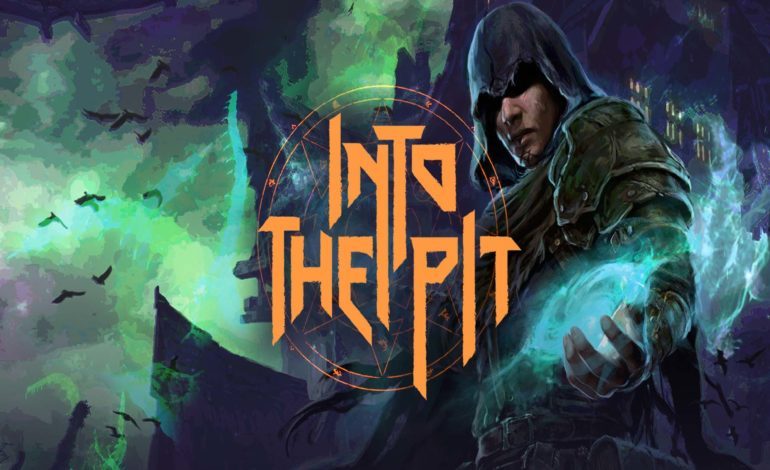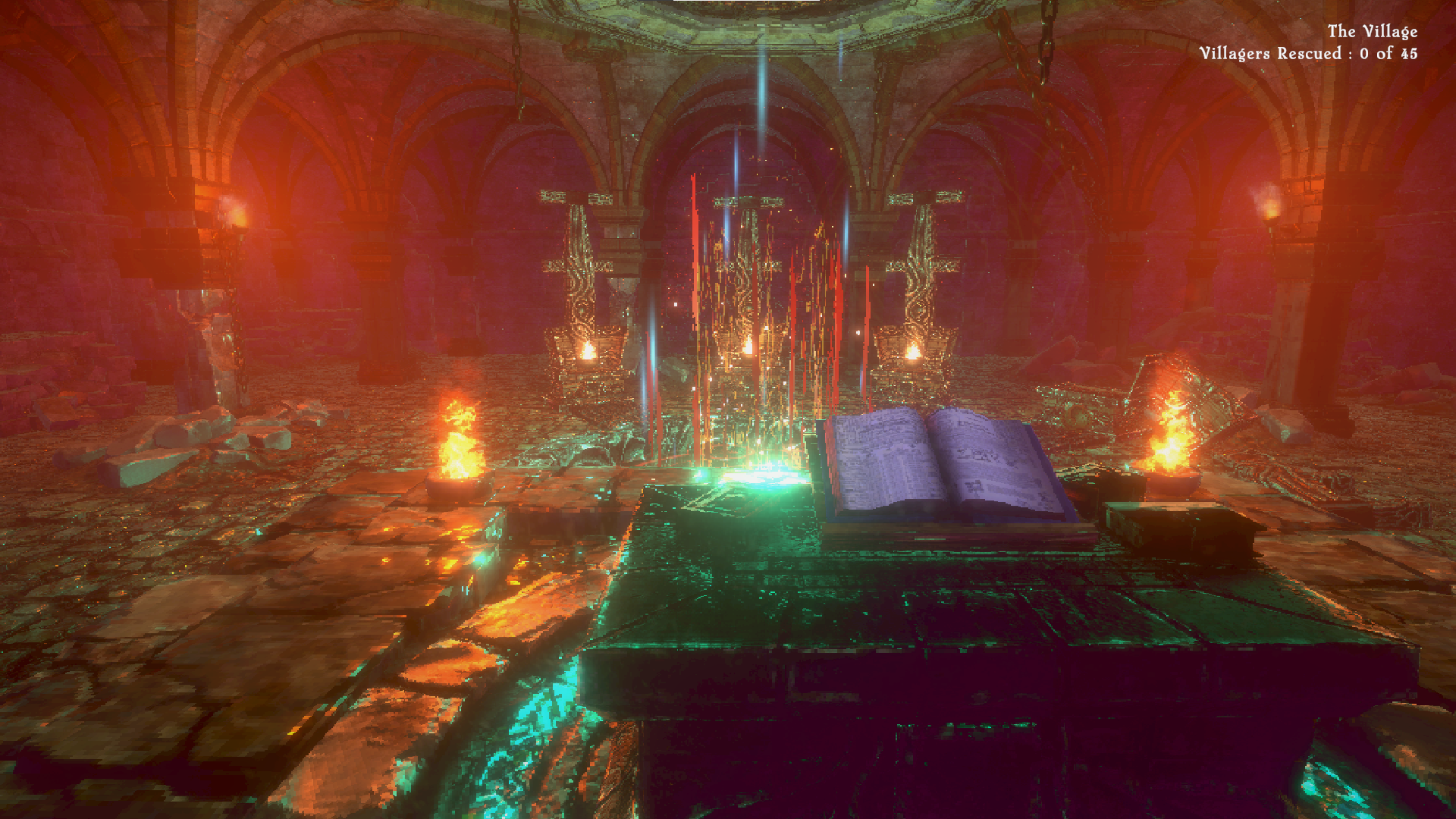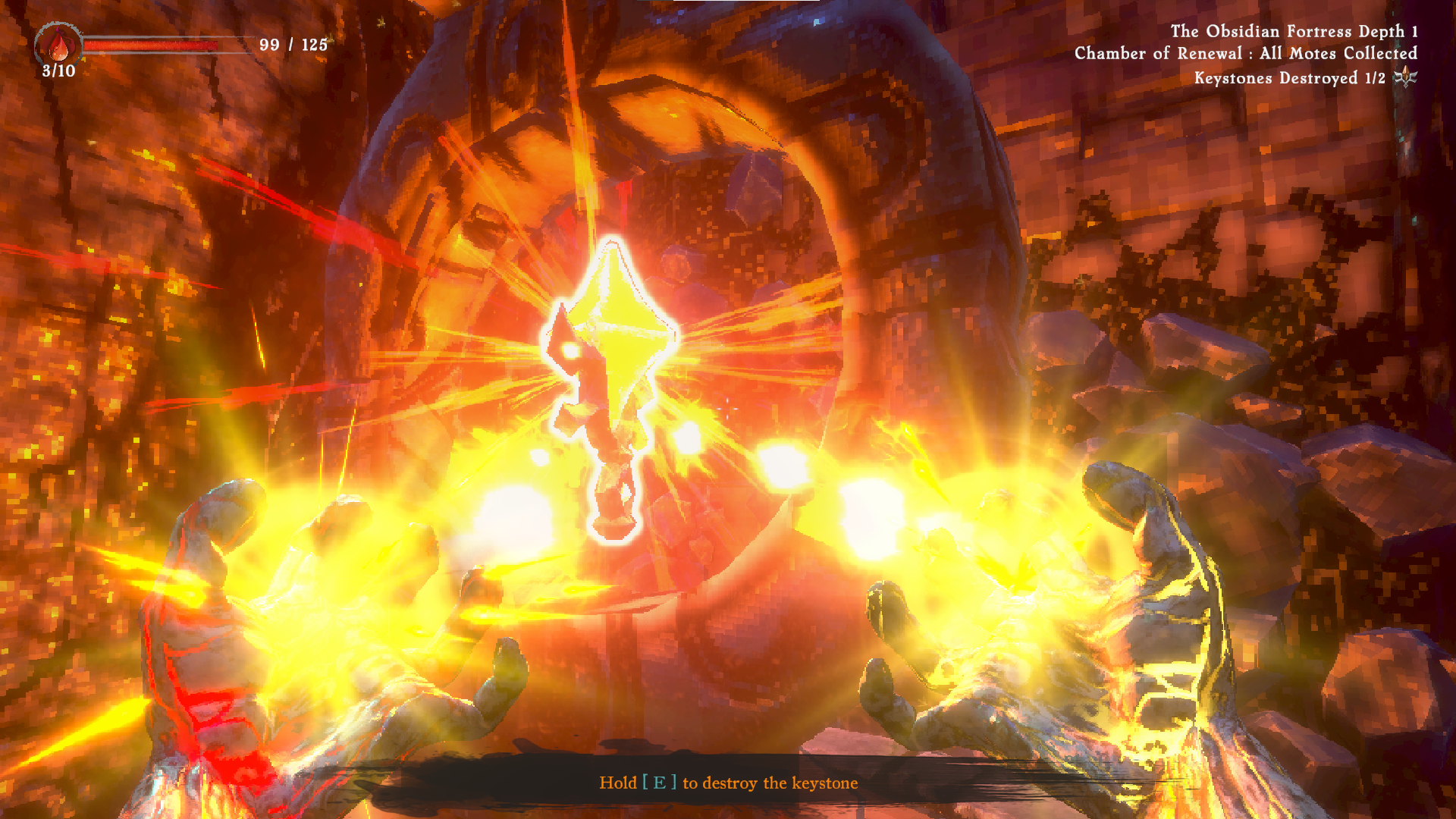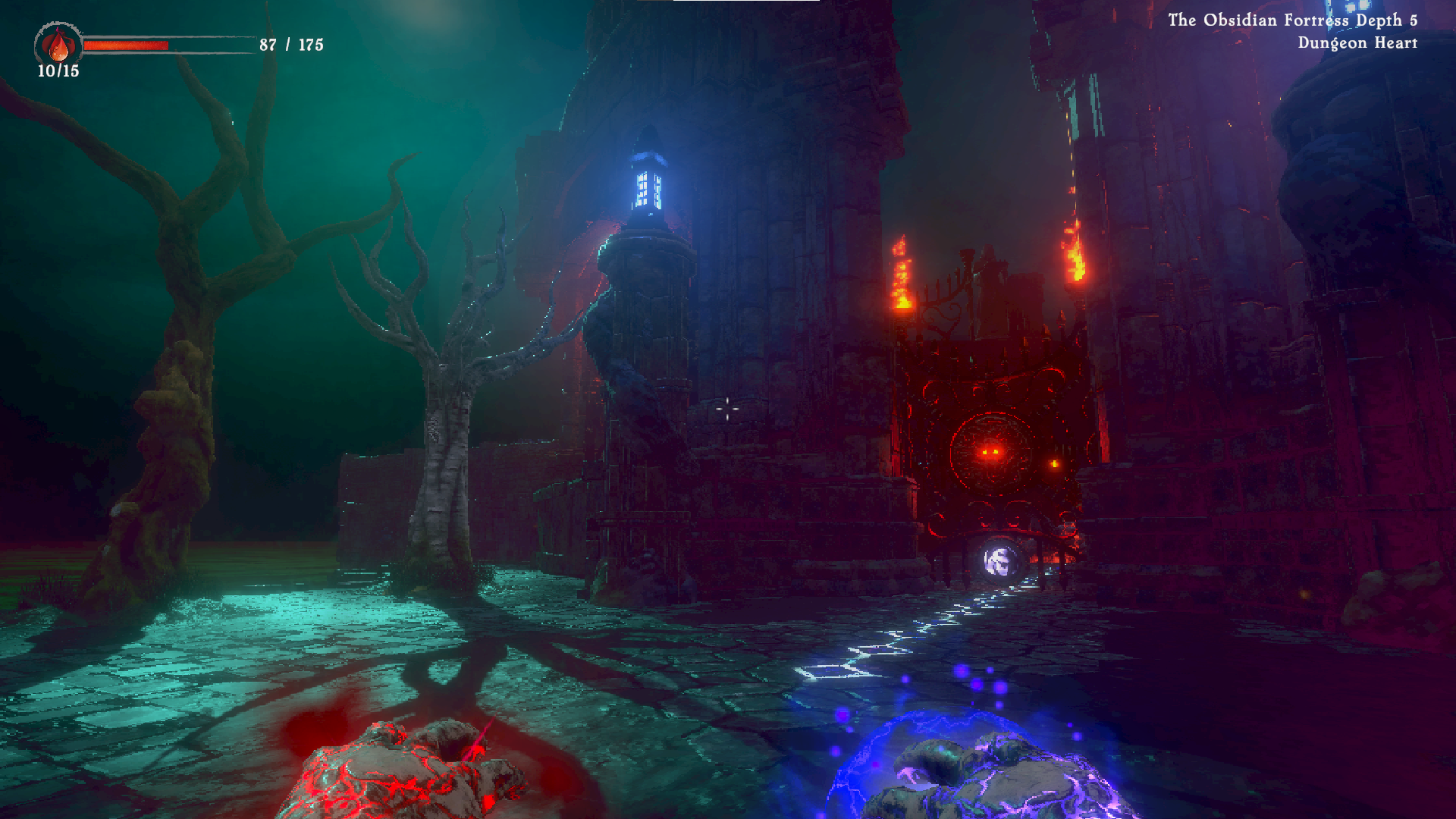

Roguelikes and Rogue-lites come in many shapes and sizes, all with their own quirks and methods of progression. The addictive gameplay loop that comes from failing and retrying until you’re either lucky enough to be blessed with a build or absolutely trounce through the entire dungeon with pure skill is one that comes from few other places. Into The Pit’s playstyle is particularly well suited for the latter, as it is an FPS. Marching through hordes of demons with magical gun hands has never felt quite as fun, even if it does get a bit repetitive.


What interested me most about Into The Pit was the way it was styled, it’s a bit of a mishmash between pixelated and 3D, but it doesn’t look bad. If anything, the style lends a lot to not only the enemies and environments, but certain details I’ll speak about later. The intro to the game is succinct and cool, you’re a magician looking for their lost sister in a town with a pit. There doesn’t need to be anything more complex than that, and the game gives you a slight tutorial just so you’re not entirely lost. Once you work your way through the tutorial, you’re guided to the pit itself, where you input runes that augment your run as well as a keystone which decides where you go. As you only start with one keystone, that can be considered the starting area. What follows is the stereotypical roguelike grind of making it to the end of the dungeon, growing stronger with each completed room. In Into The Pit, you not only need to activate four keystones to get to a lower floor, you also need to be on the lookout for villagers to rescue from the depths. These villagers act essentially as not only a free keystone unlock, but a resource that unlocks more features in the home town. This extends from more runes available for purchase to unlocking new area keystones. Aside from the villagers, there are different motes to collect, which function as the currency in game. All of these motes have a purpose both mid-run and in town, so collecting as many as possible or focusing a single run on collecting a single type of mote can be beneficial. This goes doubly for Motes of Gold, which function as the primary currency in the town. Other motes can have differing effects, like the Mote of Blood which gives you a second chance at life if you die, with the cost of this effect scaling up each time you use it.


Into The Pit’s gameplay is super tight and feels incredibly reminiscent of old-school FPS games. I absolutely love the way movement and shooting feels, especially if you get a few haste power ups. Having absurd movement speed and working on your reflexes in case you hear a demon from around the corner is thrilling, and frankly I feel like this is the game’s strongest point. When you’re strong you feel STRONG, and the shooting reflects that. Depending on the type of weapon you have, you’re out in runs just one shotting most enemies until deeper floors. I found this to be the case even in the second dungeons, which are their own topic entirely. After you beat the first boss, you unlock a second area keystone. Now you can actually use two keystones to mix and match different areas to combine aesthetics and enemy types. The way Into The Pit is styled actually lends itself really well to this, as all the colors mesh together well while still remaining distinct enough to look different from other dungeons. The Obsidian Docks will look different from the Fungal Docks, for example. There’s environmental variation aplenty, as well as different traps and enemies for each. This is where the roguelike gets more intense, but sadly still feels very same-y after awhile. Once you test most of the weapons and find a set you like it’s generally hard to break that habit. I’ve found particular combinations that are incredibly efficient at clearing, even without upgrades, to the point where other weapons feel lackluster. If you’re not ready for hours of shooting, you’d be hard pressed to progress.


Overall, Into The Pit nails the core aspects of a roguelike title. The combat is fun, the enemies and environments are varied enough to keep you on your toes constantly, and each run can feel different enough if you’re using a different set of weapons. The only issue can be the weapon variety and how that interacts with the gameplay, because there’s very little advantage to being close range aside from having a “shotgun” type of weapon. Even if you stack up on protections and lifesteal, you’re not entirely protected from damage, so there is only really incentive to keep moving and maintaining distance from enemies. This game has a really fun and addicting gameplay loop that even non-FPS players can enjoy, and I’d recommend this as a pickup for roguelike fans.
Score: 8 out of 10
Reviewed on Windows PC (Steam)
Play games, take surveys and take advantage of special offers to help support mxdwn.
Every dollar helps keep the content you love coming every single day.
